- - Beautiful Europe_Part # 2 of 2.
- 2009_06_06 : Holland_Amsterdam,Netherlands
.gif)


Amsterdam is the capital city of The Netherlands and the most populous within the Kingdom of the Netherlands. Its status as the Dutch capital is mandated by the Constitution of the Netherlands though it is not the seat of the Dutch government, which is at The Hague (Den Haag).Amsterdam has a population of 810,909 within the city-proper, 1,108,297 in the urban region and 1,571,234 in the greater metropolitan area. The city is located in the province of North Holland (Noord Holland) in the west of the country. It comprises much of the northern part of the Randstad, one of the larger conurbations in Europe, with a population of approximately 7 million.
Amsterdam's name derives from Amstelredamme,indicative of the city's origin as a dam of the river Amstel. Originating as a small fishing village in the late 12th century, Amsterdam became one of the most important ports in the world during the Dutch Golden Age (17th century), a result of its innovative developments in trade. During that time, the city was the leading center for finance and diamonds. In the 19th and 20th centuries, the city expanded, and many new neighborhoods and suburbs were planned and built. The 17th-century canals of Amsterdam and the 19–20th century Defence Line of Amsterdam are on the UNESCO World Heritage List.
As the commercial capital of the Netherlands and one of the top financial centres in Europe, Amsterdam is considered an alpha world city by the Globalization and World Cities (GaWC) study group. The city is also the cultural capital of the Netherlands. Many large Dutch institutions have their headquarters there, and 7 of the world's top 500 companies, including Philips and ING, are based in the city. In 2012, Amsterdam was ranked 2nd best city to live by the Economist Intelligence Unit (EIU) and 12th globally on quality of living by Mercer. The city was previously ranked 3rd in innovation by 2thinknow in the Innovation Cities Index 2009.
The Amsterdam Stock Exchange, the oldest stock exchange in the world, is located in the city center. Amsterdam's main attractions, including its historic canals, the Rijksmuseum, theVan Gogh Museum, Stedelijk Museum, Hermitage Amsterdam, Anne Frank House, Amsterdam Museum, itsred-light district, and its many cannabis coffee shops draw more than 3.66 million international visitors annually.
-Shortly after the floods of 1170 and 1173 locals of the river Amstel vicinity built a bridge over- and a dam across the river, hence giving its name to the village: "Aemstelredamme". The earliest recorded use of the name "Aemstelredamme" (Amsterdam) comes from a document dated October 27, 1275. Inhabitants of the village, by this document, were exempted from paying a bridge toll in the County of Holland by Count Floris V. This meant it had been allowed to the inhabitants of the village of Aemstelredamme to travel freely through the County of Holland without having to pay toll at bridges, locks and dams all through the county. The certificate describes the inhabitants as homines manentes apud Amestelledamme (people living near Amestelledamme). By 1327, the name had developed into Aemsterdam.
-VIDEO : Holland Travel Video Guide
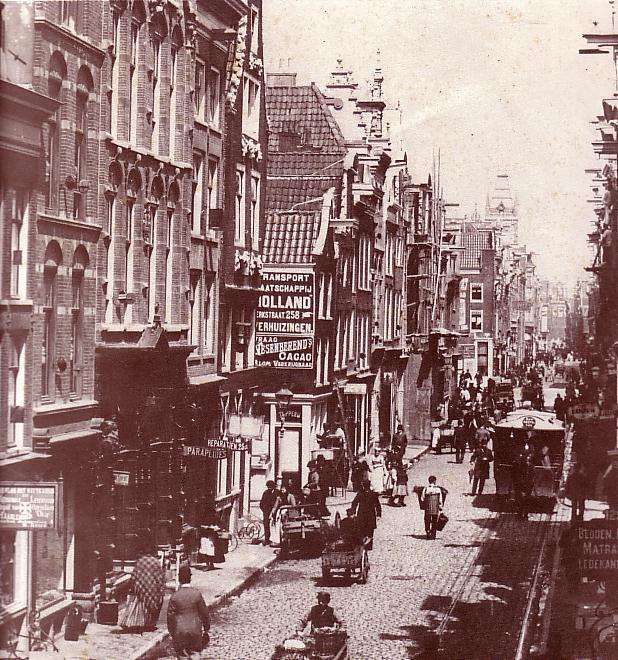
Old-Amsterdam 1891-street.
-Amsterdam in 4K (UHD)_2017:

National Monument a memorial to the war victims
Dam Square. National Monument

2009_06_06_Windmill_Amsterdam,Netherlands


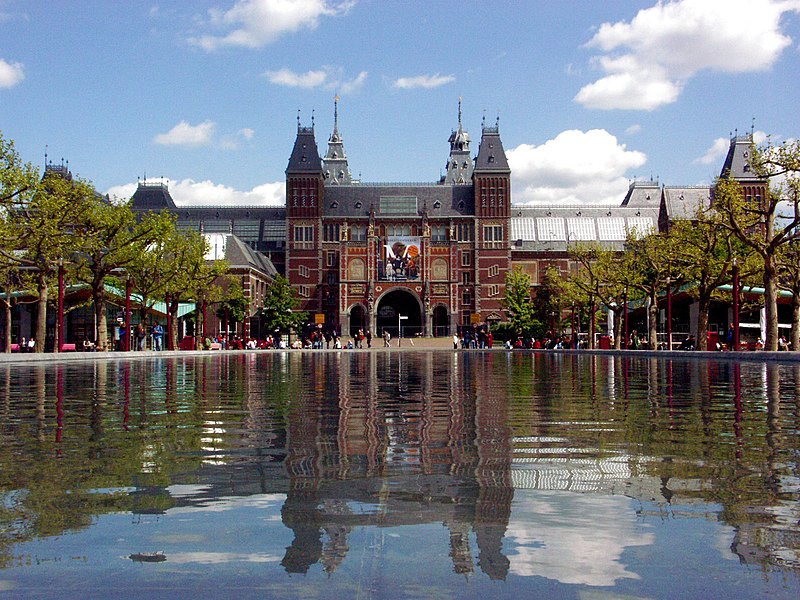


The Rijksmuseum (Dutch pronunciation: [ˈrɛi̯ksmyˌzeːjʏm]; English: State Museum) is a Dutch national museum dedicated to arts and history in Amsterdam in the Netherlands. The museum is located at the Museum Square in the borough Amsterdam South, close to the Van Gogh Museum, the Stedelijk Museum Amsterdam, and the Concertgebouw.
The Rijksmuseum was founded in The Hague in 1800 and moved to Amsterdam in 1808, where it was first located in the Royal Palace and later in the Trippenhuis. The current main building was designed by Pierre Cuypers and first opened its doors in 1885. On 13 April 2013, after a ten-year renovation which cost € 375 million, the main building was reopened by Queen Beatrix. In 2013, it was the most visited museum in the Netherlands with a record number of 2.2 million visitors.
The museum has on display 8,000 objects of art and history, from their total collection of 1 million objects from the years 1200–2000, among which are some masterpieces by Rembrandt, Frans Hals, and Johannes Vermeer. The museum also has a small Asian collection which is on display in the Asian pavilion. According to Taco Dibbits, it is a museum dedicated to "the Dutchness of Dutchness."
-VIDEO :The complete life of the painter Rembrandt van Rijn
-Rembrandt van Rijn: A collection of 546 paintings (HD):
-VIDEO :THE MASTER OF LIGHT - JOHANNES VERMEER - Discovery/History/Art (documentary)

-VIDEO : Amsterdam and Dutch Side-trips
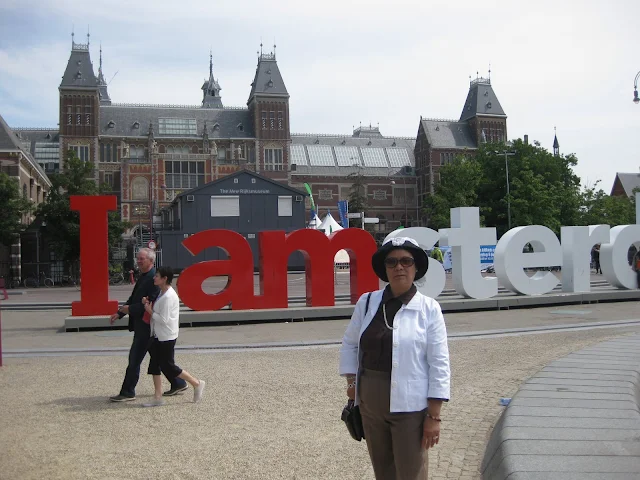

The Rijksmuseum Amsterdam

Amsterdam Canal


Amsterdam canals in summer


AMSTERDAM - BEST OF - 4K 2017 - NETHERLANDS - TRAVEL GUIDE
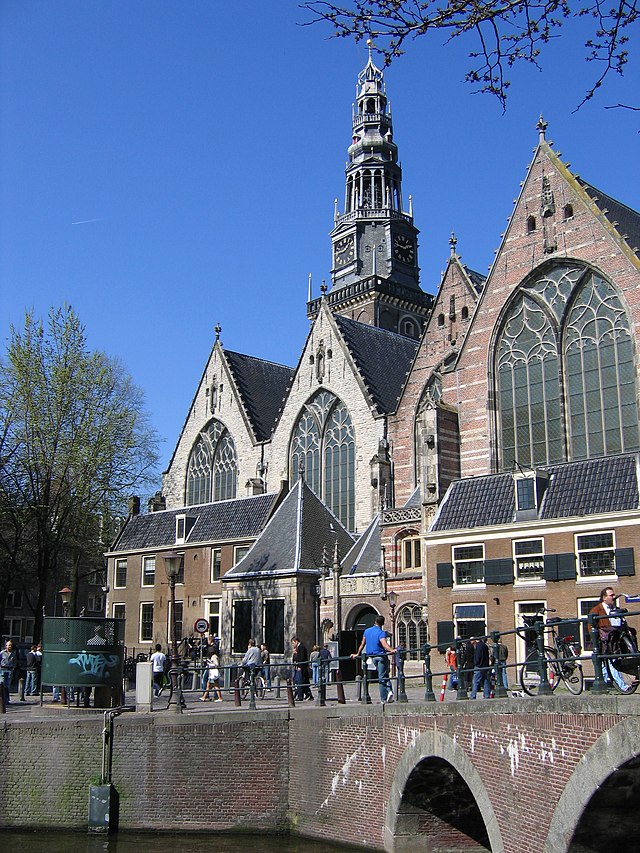
The 800-year-old Oude Kerk ("old church") is Amsterdam’s oldest building and oldest parish church, founded ca. 1213 and consecrated in 1306 by the bishop of Utrecht with Saint Nicolas as its patron saint. After the Reformation in 1578 it became a Calvinist church, which it remains today. It stands in De Wallen, now Amsterdam's main red-light district. The square surrounding the church is the Oudekerksplein.

The Westerkerk (1631), designed by Dutch architect Hendrick de Keyser in the Renaissance style. At 85m (280 ft) the cathedral's "Westertoren" steeple is the highest in Amsterdam. The canal houses on the right are characteristic of the architectural styles from the Dutch Golden Age.
Heineken Lager Beer was first brewed by Gerard Adriaan Heineken in 1873. The beer is made of purified water, maltedbarley, hops, and yeast. In 1886 H. Elion finished the development of the Heineken A-yeast, which is still used in the brewing process today.
Since 1975, most Heineken brand beer has been brewed at the Heineken brewery in Zoeterwoude, Netherlands. In 2011, 2.74 billion litres of Heineken brand beer was produced worldwide, while the total beer production of all breweries fully owned by the Heineken Group over all brands was 16.46 billion litres globally.

2009_06_06_Amsterdam,Netherlands

Diamond Museum Amsterdam
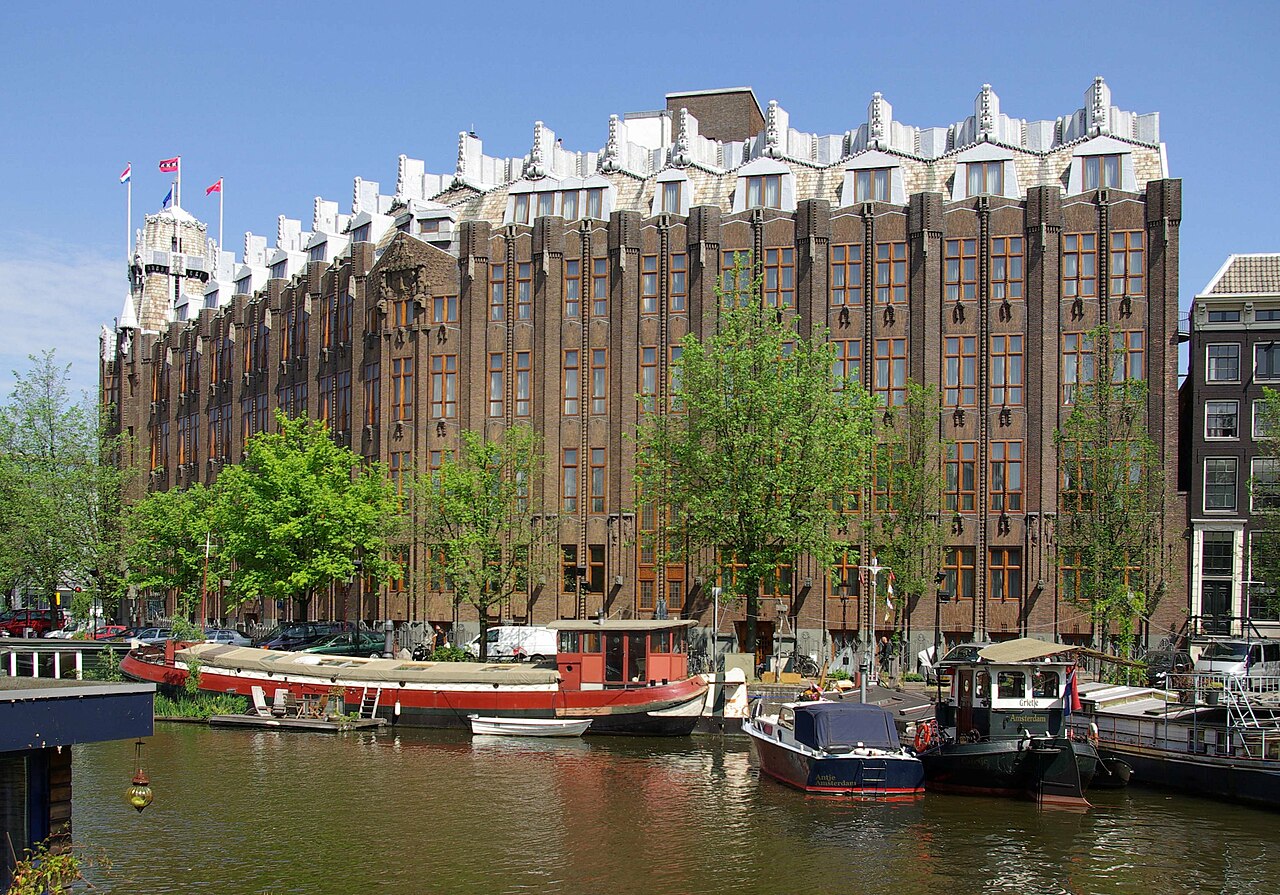
The Scheepvaarthuis, by architects Johan van der Mey, Michel de Klerk, Piet Kramer is characteristic of the architecture of the Amsterdam School.

Rijksmuseum in Amsterdam, Holland
Speaking of Pierre Cuypers neo-Gothic, here's another wide building that sits at nearly the bottom of the half-concentric canal system: the 1885 Rijksmuseum Amsterdam. Cuypers started by building French-inspired churches but moved towards Netherlands neo-Gothic over time. Here he's augmented that with a bit of Renaissance roof and corner treatments. You'll note a certain pattern with the Dutch institutional architecture using huge numbers of bricks and interrupting them with horizontal stone to break the monotony. Cuypers had an architectural firm of Catholics in a very Protestant late 19th century country. The king at first refused to enter this building, saying it was too Catholic. So much for French roofs and Gothic spires.

Back view of the Van Gogh Museum Amsterdam
-VIDEO :Vincent van Gogh - The storyA unique tv documentary of the life and the works of Vincent van Gogh. For 60 minutes we are travelling with Vincent in a geographical reconstruction of his life. The documentary shows beautiful pictures of which Van Gogh has drawn his inspiration for his works. A lot of the buildings still exist. Trough modern digital techniques the current image changes into the painting that was made by Van Gogh for over 100 years ago. The documentary begins in the basement of a museum in Mons, where they keep the first professional work of Vincent and ends in Auvers sur Oisewhere Van Gogh has been buried...
-Vincent van Gogh The Complete Gallery HD :

The Amsterdam Stock Exchange, right, is the oldest stock exchange in the world.


Vondelpark is the largest park in Amsterdam.

The De Gooyer Windmill was constructed in 1725 and moved to its current location in 1814; it is one of eight windmills in Amsterdam.


2009_06_06_@ the cheese factory,Ne

2009_06_06_Grand Holland_Amsterdam,Netherlands


-Canal boats, such as this one on Keizersgracht, give tours of the city.
A photograph taken of the Keizersgracht at the corner with the Leliegracht in Amsterdam. The Westertoren (tower of the 'Western Church') in the background






2009_06_06_Grand Holland_Amsterdam,Netherlands

-VIDEO :The Netherlands: Beyond Amsterdam
-Volendam (Dutch pronunciation: [ˌvoːlənˈdɑm]) is a town in North Holland in the Netherlands, in the municipality of Edam-Volendam. The town has about 22,000 inhabitants (November 2007).
Originally, Volendam was the location of the harbor of the nearby Edam, which was situated at the mouth of the IJ bay. In 1357, the inhabitants of Edam dug a shorter canal to the Zuiderzee with its own separate harbor. This removed the need for the original harbor, which was then dammed and used for land reclamation. Farmers and local fishermen settled there, forming the new community of Volendam, which literally meant something like 'Filled dam'. In the early part of the 20th century it became something of an artists' retreat, with both Picasso and Renoir spending time here. The majority of the population belongs to the Roman Catholic Church, which is deeply connected to the village culture. Historically, many missionaries and bishops grew up in Volendam. Today there is the chapel of Our Lady of the Water, which is located in a village park.


A view of two brothels in a small street in Amsterdam's Red-light district, also known as the "Wallen"
-De Wallen, also known as Walletjes or Rosse Buurt, is a designated area for legalised prostitution and is Amsterdam's largest and most well known red-light district. This neighborhood has become a famous attraction for tourists. It consists of a network of roads and alleys containing several hundred small, one-room apartments rented by sex workers who offer their services from behind a window or glass door, typically illuminated with red lights.
-VIDEO :The Netherlands: Beyond Amsterdam
By train, bike, and boat, we visit the top Dutch sights outside of Amsterdam: from Haarlem to Rotterdam, and from Delft to the Zuiderzee. Along the way, we enjoy charming towns with fragrant cheese markets, soggy polderland, mighty dikes, and windmills both new and old. Rolling through the Netherlands and connecting with its people, you can’t help but think, “Everything’s so...Dutch!”
Originally, Volendam was the location of the harbor of the nearby Edam, which was situated at the mouth of the IJ bay. In 1357, the inhabitants of Edam dug a shorter canal to the Zuiderzee with its own separate harbor. This removed the need for the original harbor, which was then dammed and used for land reclamation. Farmers and local fishermen settled there, forming the new community of Volendam, which literally meant something like 'Filled dam'. In the early part of the 20th century it became something of an artists' retreat, with both Picasso and Renoir spending time here. The majority of the population belongs to the Roman Catholic Church, which is deeply connected to the village culture. Historically, many missionaries and bishops grew up in Volendam. Today there is the chapel of Our Lady of the Water, which is located in a village park.

-VOLENDAM - NETHERLANDS - 4K 2017 - TRAVEL GUIDE :
Volendam is a popular tourist attraction in the Netherlands, well known for its old fishing boats and the traditional clothing still worn by some residents. The women's costume of Volendam, with its high, pointed bonnet, is one of the most recognizable of the Dutch traditional costumes, and is often featured on tourist postcards and posters (although there are believed to be fewer than 50 women now wearing the costume as part of their daily lives, most of them elderly). There is a regular ferry connection to Marken, a peninsula close by. Volendam also features a small museum about its history and clothing style, and visitors can have their pictures taken in traditional Dutch costumes.

Volendam.

The harbor of Volendam

Vollendam

At Café de Boer,Volendam,you can enjoy the beautiful view of the harbor. Situated on the embankment, you can get a snack and / or a drink here.

Vollendam


The harbor of Volendam

Vollendam

At Café de Boer,Volendam,you can enjoy the beautiful view of the harbor. Situated on the embankment, you can get a snack and / or a drink here.

Vollendam


Volendam is a historic fishing village that is especially popular amongst tourists. The lovely harbour is home to beautiful sailboats and is surrounded by quaint homes and shops. Tourists visit Volendam to stroll around the colourful town, see the locals, some of whom still wear their traditional costumes, and taste Dutch specialties such as pancakes, ‘poffertjes’ (mini-pancakes), herring and smoked eel.
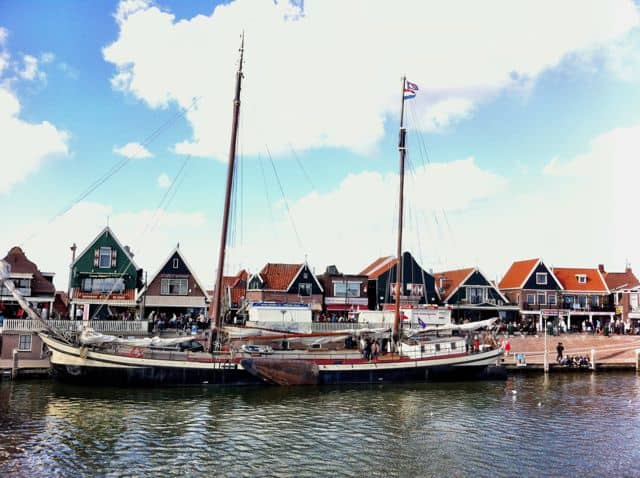
The Volendam harbour
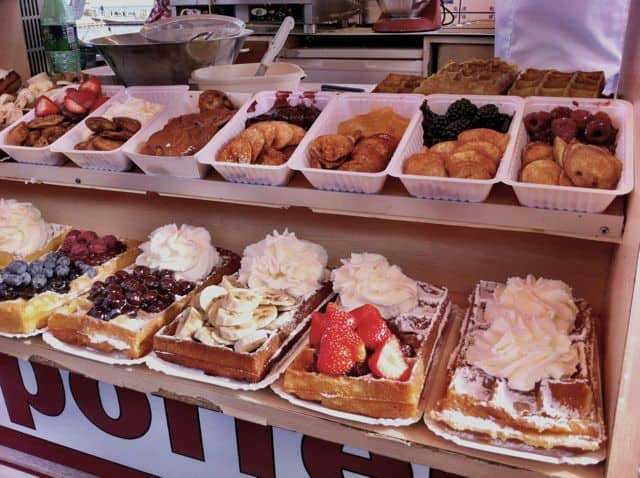
Try a waffle or ‘poffertjes’ (pronounced poffer-chers), little pancakes with castor sugar
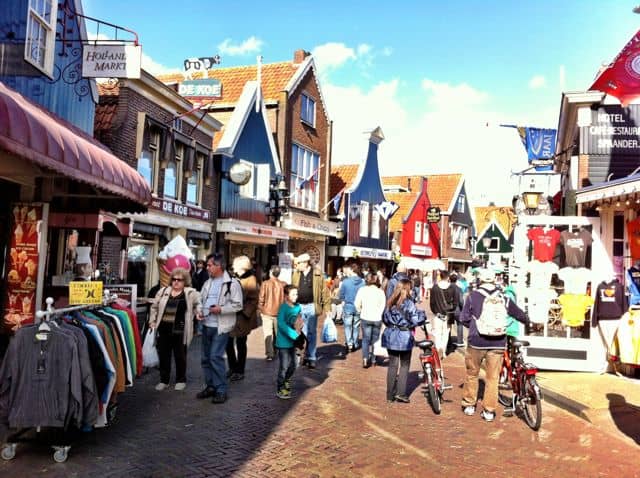
Volendam – main street
Volendam is a fishing village in North Holland, 20 kilometres north of Amsterdam. Sometimes called "the pearl of the Zuiderzee", this place is a highly popular tourist destination. Here, you'll find many Dutch clichés, including the traditional costumes and wooden shoes. Most of them, however, have a lot of historic truth to them.

 NEMO Science Museum (from latin Nobody) is a science center in Amsterdam, Netherlands. It is located in the Oosterdokseiland neighborhood in the Amsterdam-Centrum borough, situated between the Oosterdokseiland and the Kattenburg. The museum has its origins in 1923, and is housed in a building designed by Renzo Piano since 1997. It contains five floors of hands-on science exhibitions and is the largest science center in the Netherlands. It attracts annually over 500,000 visitors, which makes it the fifth most visited museum in the Netherlands.
NEMO Science Museum (from latin Nobody) is a science center in Amsterdam, Netherlands. It is located in the Oosterdokseiland neighborhood in the Amsterdam-Centrum borough, situated between the Oosterdokseiland and the Kattenburg. The museum has its origins in 1923, and is housed in a building designed by Renzo Piano since 1997. It contains five floors of hands-on science exhibitions and is the largest science center in the Netherlands. It attracts annually over 500,000 visitors, which makes it the fifth most visited museum in the Netherlands.
View from the Nemo Science Museum


Dutch_wind
-VIDEO : AMSTERDAM 2015 : Best destination in the World - World Travel Channel HD
.
-VIDEO : Amsterdam (2014)_Rick Steves Europe_Filled with history and happy-go-lucky, Amsterdam is a delight to explore. This uniquely entertaining city shows us Rembrandts and Van Goghs, more bikes than cars, flirting prostitutes, and pot-filled coffeeshops — all under tall, skinny facades leaning out below quaint church towers.
-VIDEO :
-VIDEO :The French Riviera: A History Of Pictures
-Monaco:




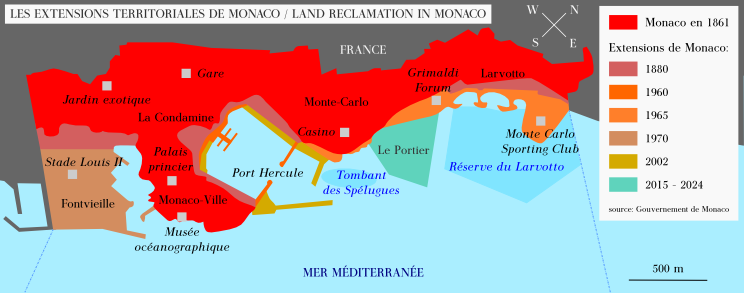





































at Monaco-Ville, the old village in Monaco, where the Prince’s Palace is located. The entire village is located on top of a huge 141m tall monolith, and is also known as Le Rocher, or the Rock. It was quite a climb to get to the top, but the gorgeous sweeping views of Port Hercule and the rest of Monaco made the climb so much more interesting.
When a reformed jewel thief is suspected of returning to his former occupation, he must ferret out the real thief in order to prove his innocence.

Though To Catch a Thief stars the legendary Cary Grant, the film definitely belongs to Grace Kelly. Given what we know now, it’s hard to ignore her connection to the location. While half of To Catch a Thief was filmed on the Paramount lot, the rest was filmed on location in the south of France, in and around Monaco. Ms. Kelly married Prince Rainer and became Princess of Monaco after making her last film, High Society. In To Catch a Thief, there are several scenes of Grace Kelly driving around the south of France; the same place she would die in a car accident in 1982.






The Nice tramway on Place Garibaldi in Nice, on the French Riviera. The tramcar uses onboard nickel metal hydride batteries to cross this historical square.


Panorama of the beachfront of Nice, France.







Le Negresco seen at sunrise
The Hotel Negresco is a famous hotel and site of the equally famous restaurant Le Chantecler, located on the Promenade des Anglais on the Baie des Anges in Nice, France and named after Henri Negresco (1868–1920) who had the palatial hotel constructed in 1912. In keeping with the conventions of the times, when the Negresco first opened in 1913 its front opened facing the Mediterranean sea.






Andrea Bocelli, Sarah Brightman - Time To Say Goodbye (HD)
-VIDEO :The French Riviera: A History Of Pictures
-Monaco:

Monaco's flag and Coat of arms
armoiries des Grimaldi ornés de deux moines en armes
Monaco , officially the Principality of Monaco (French: Principauté de Monaco), is a sovereign city-state and microstate, located on the French Riviera in Western Europe. France borders the country on three sides while the other side borders the Mediterranean Sea. Monaco has an area of 2.02 km2 (0.78 sq mi) and a population of about 36,371; it is the second smallest and the most densely populated country in the world. Monaco has a land border of 4.4 km (2.7 mi), a coastline of 4.1 km (2.5 mi), and a width that varies between 1,700 and 349 m (5,577 and 1,145 ft). The highest point in the country is a narrow pathway named Chemin des Révoires on the slopes of Mont Agel, in the Les Révoires Ward, which is 161 metres (528 feet) above sea level. Monaco's most populous Quartier is Monte Carlo and the most populous Ward is Larvotto/Bas Moulins. Through land reclamation, Monaco's land mass has expanded by twenty percent. Although small, Monaco is very old and quite well known, especially because of its status as a playground for the rich and famous; which themselves become a spectacle for tourists and an economic engine in the Mediterranean. In 2014 it was noted about 30% percent of the population were millionaires, similar to Zürich or Geneva.
Monaco is a principality governed under a form of constitutional monarchy, with Prince Albert II as head of state. Although Prince Albert II is a constitutional monarch, he wields immense political power. The House of Grimaldi have ruled Monaco, with brief interruptions, since 1297. The official language is French, but Monégasque, Italian, and English are widely spoken and understood.The state's sovereignty was officially recognized by the Franco-Monegasque Treaty of 1861, with Monaco becoming a full United Nations voting member in 1993. Despite Monaco's independence and separate foreign policy, its defense is the responsibility of France. However, Monaco does maintain two small military units.
Economic development was spurred in the late 19th century with the opening of the country's first casino, Monte Carlo, and a railway connection to Paris. Since then, Monaco's mild climate, splendid scenery, and upscale gambling facilities have contributed to the principality's status as a premier tourist destination and recreation center for the rich and famous. In more recent years, Monaco has become a major banking center and has successfully sought to diversify its economy into services and small, high-value-added, non-polluting industries. The state has no income tax, low business taxes, and is well known for being a tax haven.
Monaco is not formally a part of the European Union (EU), but it participates in certain EU policies, including customs and border controls. Through its relationship with France, Monaco uses the euro as its sole currency (prior to this it used the Monégasque franc). Monaco joined the Council of Europe in 2004.
Monaco's name comes from the 6th century BC nearby Phocaean Greek colony. Referred to by the Ligurians as Monoikos, from the Greek "μόνοικος", "single house", from "μόνος" (monos) "alone, single" + "οἶκος" (oikos) "house", which bears the sense of a people either settled in a "single habitation" or of "living apart" from others. According to an ancient myth, Hercules passed through the Monaco area and turned away the previous gods. As a result, a temple was constructed there, the temple of Hercules Monoikos. Because the only temple of this area was the "House" of Hercules, the city was called Monoikos. It ended up in the hands of the Holy Roman Empire, which gave it to the Genoese. An ousted branch of Genoese family, the Grimaladis, fought for it for a hundred years with them before really gaining control. Though the Republic of Genoa would last until the 19th century, they let the Grimaldis to keep Monaco, and, likewise, both France and Spain left it alone for hundreds of years. France did not annex it until the French Revolution, but after the defeat of Napoleon it was put under the care of the Kingdom of Sardinia. In the 19th-century, when Sardinia became a part of Italy, the region came under French influence again but France allowed it to remain independent. Like France, Monaco was over-run by the Axis powers during World War II and for a short time was administered by Italy, then the Third Reich, before finally being liberated. Although the occupation lasted for just a short time, it meant the deportation of the Jewish population and execution of several resistance members from Monaco. Since then Monaco has been independent but has taken some steps towards integration with the European Union.

Monaco circa 1900

The Prince and Princess of Monaco arrive at the White House for a luncheon.

Directly ahead is La Condamine, to the right with the smaller harbor is Fontvieille, with "The Rock" (the old town, fortress, and Palace) jutting out between the two harbors; to the left with the high-rise buildings is La Rousse/Saint Roman

Land reclamation in Monaco since 1861




View of Port of Hercules, in the La Condamine district


2013_06_13 : At the  Marriott Hotel In Monaco_Riviera Marriott Hotel La Porte de Monaco
Marriott Hotel In Monaco_Riviera Marriott Hotel La Porte de Monaco
 Marriott Hotel In Monaco_Riviera Marriott Hotel La Porte de Monaco
Marriott Hotel In Monaco_Riviera Marriott Hotel La Porte de Monaco- Port de Cap d'Ail
- Cap d'Ail, 06320 France














Saint Nicholas Cathedral, Monaco Cathedral

The grave of Princess Grace of Monaco in St. Nicholas Cathedral, Monaco
Kelly's funeral was held at the Saint Nicholas Cathedral, Monaco on September 18, 1982.

Grace of Monaco (1972)
Grace Patricia Kelly (November 12, 1929 – September 14, 1982) was an American actress who, after marrying Prince Rainier III, became the Princess of Monaco.
The grave of Princess Grace of Monaco in St. Nicholas Cathedral, Monaco
Kelly's funeral was held at the Saint Nicholas Cathedral, Monaco on September 18, 1982.

Grace of Monaco (1972)
Grace Patricia Kelly (November 12, 1929 – September 14, 1982) was an American actress who, after marrying Prince Rainier III, became the Princess of Monaco.


The Prince's Palace of Monaco is the official residence of the Prince of Monaco. Built in 1191 as a Genoese fortress, during its long and often dramatic history it has been bombarded and besieged by many foreign powers.

The statue of François Grimaldi outside the palace commemorates his capture of the fortress disguised as a monk in 1297

The Rocher de Monaco overlooks both the port and the Mediterranean. The Prince's Palace is on the Rocher in the foreground. The imposing Palladian building in the far background is the Oceanographic Museum, founded by Prince Albert I in 1906. The remains of All Saints Tower

The Prince's Palace of Monaco is the official residence of the Prince of Monaco. Built in 1191 as a Genoese fortress, during its long and often dramatic history it has been bombarded and besieged by many foreign powers. Since the end of the 13th century, it has been the stronghold and home of the Grimaldi family who first captured it in 1297. The Grimaldi ruled the area first as feudal lords, and from the 17th century as sovereign princes, but their power was often derived from fragile agreements with their larger and stronger neighbours.
Thus while other European sovereigns were building luxurious, modern Renaissance and Baroque palaces, politics and common sense demanded that the palace of the Monegasque rulers be fortified. This unique requirement, at such a late stage in history, has made the palace at Monaco one of the most unusual in Europe. Indeed, when its fortifications were finally relaxed during the late 18th century, it was seized by the French and stripped of its treasures, and fell into decline, while the Grimaldi were exiled for over 20 years.
The Grimaldi's occupation of their palace is also unusual because, unlike other European ruling families, the absence of alternative palaces and land shortages have resulted in their use of the same residence for more than seven centuries. Thus, their fortunes and politics are directly reflected in the evolution of the palace. Whereas the Romanovs,Bourbons, and Habsburgs could, and frequently did, build completely new palaces, the most the Grimaldi could achieve when enjoying good fortune, or desirous of change, was to build a new tower or wing, or, as they did more frequently, rebuild an existing part of the palace. Thus, the Prince's Palace reflects the history not only of Monaco, but of the family which in 1997 celebrated 700 years of rule from the same palace.
During the 19th and early 20th centuries, the palace and its owners became symbols of the slightly risqué glamour and decadence that were associated with Monte Carlo and the French Riviera. Glamour and theatricality became reality when the American film star Grace Kelly became chatelaine of the palace in 1956. In the 21st century, the palace remains the residence of the current Prince of Monaco.
The statue of François Grimaldi outside the palace commemorates his capture of the fortress disguised as a monk in 1297

The Rocher de Monaco overlooks both the port and the Mediterranean. The Prince's Palace is on the Rocher in the foreground. The imposing Palladian building in the far background is the Oceanographic Museum, founded by Prince Albert I in 1906. The remains of All Saints Tower


Monaco, Prince's Palace, Changing of the Guard


The Prince's Palace of Monaco










-Monaco in 4K_2016 :

at Monaco-Ville, the old village in Monaco, where the Prince’s Palace is located. The entire village is located on top of a huge 141m tall monolith, and is also known as Le Rocher, or the Rock. It was quite a climb to get to the top, but the gorgeous sweeping views of Port Hercule and the rest of Monaco made the climb so much more interesting.
-VIDEO :The Princesses of Monaco ~ Intimate Portrait
-VIDEO:
Monaco's Royal Family - Princess Grace of Monaco - Grace Kelly, Hollywood Princess (Documentary)
When a reformed jewel thief is suspected of returning to his former occupation, he must ferret out the real thief in order to prove his innocence.

Though To Catch a Thief stars the legendary Cary Grant, the film definitely belongs to Grace Kelly. Given what we know now, it’s hard to ignore her connection to the location. While half of To Catch a Thief was filmed on the Paramount lot, the rest was filmed on location in the south of France, in and around Monaco. Ms. Kelly married Prince Rainer and became Princess of Monaco after making her last film, High Society. In To Catch a Thief, there are several scenes of Grace Kelly driving around the south of France; the same place she would die in a car accident in 1982.
-VIDEO :French Riviera: Uniquely Chic_Rick Steves Europe.
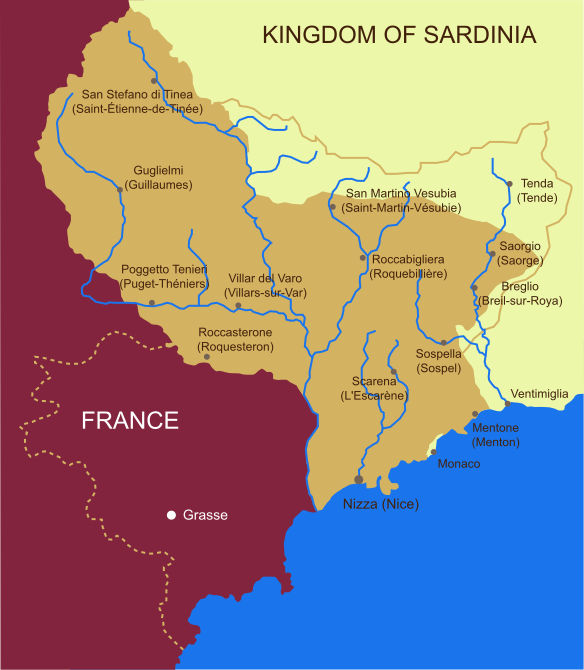
French annexation of Nice in 1860. However, Monaco was allowed to remain independent
The Côte d'Azur


Our romantic journey begins in the city of Cannes in the south of France, along the ‘Blue Coast’, the Côte D`Azur. For most of the time, this impressive section of the Mediterranean coast enjoys a mild climate and is synonymous with a luxurious lifestyle beneath the southern sun. Le Suquet, the old town that is located above the old port has, in spite of tourism, managed to retain its air of calm sophistication.The markets in the old town offer an abundance of eye-catching vegetables, fruit and fresh fish. Narrow and picturesque alleys lead up to the tiny mountain of Mont Chevalier on which the historical area of the city is situated. Close by is the Cap D`Antibes with its mighty castle that from 1386 was owned by the Grimaldis and in the 16th century became a French possession. A huge defensive wall built by the Sun King‘s master fortress builder surrounds the old town and protects its seaward side. Nice is the ‘dream coast’s’ fascinating and colourful city located on the curve of Angel Bay, a metropolis that has lost little of its turn of the century charm. The magnificent Promenade Des Anglais, named after the resort’s former large contingent of English visitors, was built during the19th century. The historical centre of the city, Vielle Ville, has become the home of Arabian immigrants, thus couscous features prominently on the menu. The old fish market is the most beautiful on the entire Côte D`Azur and its traditional displays of seafood are a feast to the eye. In the centre of the Côte D`Azur’s enchanting landscape is the picturesque medieval village of Eze. Most of the village that can be seen today had its origins in the 10th century and its fine old buildings, charming back streets and archways are real architectural gems. Only a little further along the coast is the Principality of Monaco which, after the Vatican, is the smallest yet most unique sovereign state in the world. Luxury yachts anchor in the harbour throughout the year and travel from all over the globe to visit this much sought after tax haven and exclusive casino paradise. Romance, history, luxury, glamour, prosperity and sunshine: the Côte D`Azur!

Nice pay and free beaches on the Baie des Anges in mid-summer. Downside: pebbles and slightly steep entry/exit from water to beach. Beach shoes recommended and folk with wobbly ankles should avoid.
In fairytale Monaco, we listen to the graceful reshuffling of personal fortunes at the casino, then we follow in the footsteps of 19th century aristocrats along Nice's Promenade des Anglais, and visit the picturesque, artist hangouts of Chagall, Matisse and Picasso.

French annexation of Nice in 1860. However, Monaco was allowed to remain independent
The Côte d'Azur
France
Officially the Côte d'Azur (Blue Coast) is the Mediterranean coast in the south of France that stretches from Hyeres to the Italian Border, while the French Riviera is the popular beach resort section that occupies the eastern part of the Côte d'Azur from Cannes through Juans les Pins,Antibes,Villeneuve-Loubet Plage,Cagnes-sur-Mer and Nice, past the Monaco principality and on to the last French Town before Italy,Menton.
Read more:http://www.bugbog.com/european_countries/france_travel_guide/france_travel_cote_d_azur.html#ixzz3oeV8wy5E
Read more:http://www.bugbog.com/european_countries/france_travel_guide/france_travel_cote_d_azur.html#ixzz3oeV8wy5E

What is the Côte d'Azur?
There are many ideas on the Côte d'Azur's territorial limits. Some think it goes as far as Marseille or as short a distance as St Tropez, while there are French locals who equate the province of Alpes-Maritimes with the Côte d'Azur, but the most commonly accepted span is from the Italian border (near Menton) to Hyeres, as we have pictured above.
The depth of the 'Côte' (coast) into the French hinterland is another question. Holiday villas in Grasse are classified in the Côte d'Azur but the sea is 18 kms (11 miles) away at that point. Logic dictates that the inland border extends to no more than the Southern Alps mountain range.
Beauty or Blight?
Whatever it's called, this section of coastline has its critics...Anthony Peregrine of the Sunday Times calls Cannes a 'tawdry patch of urban blight messing up a nice coast' but that's a little exaggerated as the three main Riviera towns - Cannes, Antibes and Nice - all have magnificent sea fronts, warm summer water, some lovely old buildings, lively agreeable locals (except perhaps les riches of Cannes who strut around with an excessive air of self importance), excellent fresh food (from restaurants or supermarkets), stunning weather most of the year, good museums and some terrific beaches (tho' mostly stony).
There is a fair amount of corrupt-developer blight too, of course, but what popular urban area doesn't suffer from a degree of that these days?
There is a fair amount of corrupt-developer blight too, of course, but what popular urban area doesn't suffer from a degree of that these days?
The Riviera or whatever you choose to call it - is in our humble opinion - less snooty than you might think and still terrific for walking, eating, swimming and looking at people and places. Some fine museums, too, but the killer app is the weather, which - with the occasional hiccup - is staggeringly pleasant, mild with blue skies for most of the year. Queen Victoria's court knew how to pick a holiday spot and Nice was their choice!
-VIDEO :French Riviera Vacation Travel Video Guide • Great Destinations_Cote d'Azur, the wonderful "blue bank" has been the symbol of high life, being the millionaire's holiday resort for more than 100 years. Beautiful beaches, amazing landscapes, immense cultural relics and luxury are at its utmost. Beginning at the Italian boarder line up the famous cities. Menton is famous of its "lemon festival", and it also has the best climate. The tiny duchy of Monaco is hallmarked by Monte Carlo casinos and the Formula-1 Grand Prix, while the Saint Jean peninsula has highest rate of aristocrats and celebrities per square meter. Nice, known by its flower carnival, is a big town, braided by its legendary seaside walkway, Promenade des Anglais. Antibes reminds us of Picasso and Napoleon, while Cannes is the European film capital. During the May Film Festival every star that matters walks that red carpet. St. Paul de Vence is the favorite corner of many of XX. century prominent artists. Surrounded by a town-wall, it is the showpiece of romantic Provencal settlement. St. Tropez, the city of the famous gendarme, was the most illustrious, most extravagant resort of the 60’s, brought into fashion by Brigitte Bardot and her friends.
Brigitte Bardot was once a pin-up for every teenage boy. She is pictured in the film Le Mepris (1963)
-VIDEO :Cote D'azur Vacation Travel Video Guide
Travel video about destination Cote D'Azur.Our romantic journey begins in the city of Cannes in the south of France, along the ‘Blue Coast’, the Côte D`Azur. For most of the time, this impressive section of the Mediterranean coast enjoys a mild climate and is synonymous with a luxurious lifestyle beneath the southern sun. Le Suquet, the old town that is located above the old port has, in spite of tourism, managed to retain its air of calm sophistication.The markets in the old town offer an abundance of eye-catching vegetables, fruit and fresh fish. Narrow and picturesque alleys lead up to the tiny mountain of Mont Chevalier on which the historical area of the city is situated. Close by is the Cap D`Antibes with its mighty castle that from 1386 was owned by the Grimaldis and in the 16th century became a French possession. A huge defensive wall built by the Sun King‘s master fortress builder surrounds the old town and protects its seaward side. Nice is the ‘dream coast’s’ fascinating and colourful city located on the curve of Angel Bay, a metropolis that has lost little of its turn of the century charm. The magnificent Promenade Des Anglais, named after the resort’s former large contingent of English visitors, was built during the19th century. The historical centre of the city, Vielle Ville, has become the home of Arabian immigrants, thus couscous features prominently on the menu. The old fish market is the most beautiful on the entire Côte D`Azur and its traditional displays of seafood are a feast to the eye. In the centre of the Côte D`Azur’s enchanting landscape is the picturesque medieval village of Eze. Most of the village that can be seen today had its origins in the 10th century and its fine old buildings, charming back streets and archways are real architectural gems. Only a little further along the coast is the Principality of Monaco which, after the Vatican, is the smallest yet most unique sovereign state in the world. Luxury yachts anchor in the harbour throughout the year and travel from all over the globe to visit this much sought after tax haven and exclusive casino paradise. Romance, history, luxury, glamour, prosperity and sunshine: the Côte D`Azur!

Nice pay and free beaches on the Baie des Anges in mid-summer. Downside: pebbles and slightly steep entry/exit from water to beach. Beach shoes recommended and folk with wobbly ankles should avoid.
Nice, France :
-VIDEO :NICE, FRANCE AND FRENCH RIVIERA TOUR



Nice (/ˈniːs/, French pronunciation: [nis]; Niçard Occitan: Niça [classical norm] or Nissa [nonstandard],Italian: Nizza or Nizza Marittima, Greek: Νίκαια, Latin: Nicaea) is the fifth most populous city in France, after Paris, Marseille, Lyon and Toulouse. The urban area of Nice extends beyond the administrative city limits with a population of about 1 million on an area of 721 km2(278 sq mi). Located on the south east coast of France on the Mediterranean Sea, Nice is the second-largest French city on the Mediterranean coast after Marseille.
The city is called Nice la Belle (Nissa La Bella in Niçard), which means Nice the Beautiful, which is also the title of the unofficial anthem of Nice, written by Menica Rondelly in 1912. Nice is the capital of the Alpes Maritimes département and the second biggest city of the Provence-Alpes-Côte d'Azurregion after Marseille.
The area of today's Nice contains Terra Amata, an archaeological site which displays evidence of a very early use of fire. Around 350 BC, Greeks of Marseille founded a permanent settlement and called it Nikaia, after Nike, the goddess of victory. Through the ages, the town has changed hands many times. Its strategic location and port significantly contributed to its maritime strength. For years it was a dominion of Savoy, then became part of France between 1792 and 1815, when it was returned to Piedmont-Sardinia until its reannexation by France in 1860.
The natural beauty of the Nice area and its mild Mediterranean climate came to the attention of the English upper classes in the second half of the 18th century, when an increasing number of aristocratic families took to spending their winter there. The city's main seaside promenade, the Promenade des Anglais (‘the Walkway of the English') owes its name to the earliest visitors to the resort. For decades now, the picturesque Nicean surroundings have attracted not only those in search of relaxation, but also those seeking inspiration. The clear air and soft light has been of particular appeal to some of Western culture's most outstanding painters, such as Marc Chagall,Henri Matisse, Niki de Saint Phalle and Arman. Their work is commemorated in many of the city's museums, including Musée Marc Chagall, Musée Matisse and Musée des Beaux-Arts Jules Chéret.[5] Nice has the second largest hotel capacity in the country and it is one of its most visited cities, receiving 4 million tourists every year. It also has the third busiest airport in France after the two main Parisian ones. It is the historical capital city of the County of Nice (Comté de Nice).
-NICE - Cote d'Azure in 4K_2017 :
-VIDEO :NICE, FRANCE AND FRENCH RIVIERA TOUR
In summer of 2006, Danny and Michael visit some of the popular sites in Nice, Cannes, and Manaco. French world cup celebrations from 2006 in the streets of Nice France are included.

Nice, Harbour (Port)

The port of Nice, on the Mediterranean coast (French Riviera). In the background, the church Notre-Dame-du-Port (= 'Our Lady of the Harbour').

View of the Place Masséna

Fontaine du Soleil (Fountain of the Sun),built in 1956; Nice, France



View of the Place Masséna_Nice_France


The Nice tramway on Place Garibaldi in Nice, on the French Riviera. The tramcar uses onboard nickel metal hydride batteries to cross this historical square.

The St Nicholas Orthodox Cathedral, Nice (French: Cathédrale Orthodoxe Saint-Nicolas de Nice, is a Russian Orthodox cathedral located in the French city of Nice. It functions as a house of worship of the Moscow Patriarchate, while it is the legal property of the Russian Federation, administered by the Property Department of the Moscow Kremlin, it is also recognized as a national monument of France. It is the largest Russian Orthodox cathedral in Western Europe.
The cathedral was opened in 1912, thanks to the generosity of Russia's Tsar Nicholas II. From 1931 until 15 December 2011 (after a longstanding legal dispute over ownership was resolved), the parish that occupied the cathedral was part of the Paris-based Patriarchal Exarchate for Orthodox Parishes of Russian Tradition in Western Europe under the jurisdiction of the Church of Constantinople.

A most beautiful sight, onion domes surrounded by palms. not a common sight, but I believe can also be seen in Sochi. In a beautiful state of repair, internally and externally, it was founded by the Russian Royal family in the 1860's and consecrated as a cathedral in 1912. The cathedral has been back in the control of the Russian Orthodox Church since 1912.

Russian cathedral, Nice.France.
A most beautiful sight, onion domes surrounded by palms. not a common sight, but I believe can also be seen in Sochi. In a beautiful state of repair, internally and externally, it was founded by the Russian Royal family in the 1860's and consecrated as a cathedral in 1912. The cathedral has been back in the control of the Russian Orthodox Church since 1912.

Panorama of the beachfront of Nice, France.

Beach front_NICE_France

2013-06-12_ Beach covered with large pebbles


The Nice seafront on a windy day, viewed from the "Colline du Château"


The Nice seafront on a windy day, viewed from the "Colline du Château"

2013-06-12_Nice_France



-VIDEO :Hotel Negresco

Le Negresco seen at sunrise
The Hotel Negresco is a famous hotel and site of the equally famous restaurant Le Chantecler, located on the Promenade des Anglais on the Baie des Anges in Nice, France and named after Henri Negresco (1868–1920) who had the palatial hotel constructed in 1912. In keeping with the conventions of the times, when the Negresco first opened in 1913 its front opened facing the Mediterranean sea.
-VIDEO :Hôtel NEGRESCO Nice - Palaces du Littoral / Figaro Nautisme

2013-06-12_Strolling along Casino Ruhl - Nice,France.

2013-06-12_At The Promenade des Anglais,Ni


2013-06-12_At The Promenade des Anglais,Ni
-VIDEO :Nice - La Promenade des Anglais-(2013)
The Promenade des Anglais ("Promenade of the English") is a promenade along the Baie des Anges ("Bay of the Angels"), which is a bay of the Mediterranean, in Nice. Before Nice was urbanized, the coastline at Nice was just bordered by a deserted stretch of beach covered with large pebbles. The first houses were located on higher ground well away from the sea, as wealthy tourists visiting Nice in the 18th century did not come for the beach, but for the gentle winter weather. The areas close to the water were home to Nice's dockworkers and fishermen.
In the second half of the 18th century, many wealthy English people took to spending the winter in Nice, enjoying the panorama along the coast. When a particularly harsh winter up north brought an influx of beggars to Nice, some of the rich Englishmen proposed a useful project for them: the construction of a walkway (chemin de promenade) along the sea.
The city of Nice, intrigued by the prospect of a pleasant promenade, greatly increased the scope of the work. The Promenade was first called the Camin dei Anglès (the English Way) by the Niçois in their native dialect, Nissart. After the annexation of Nice by France in 1860 it was rechristened La Promenade des Anglais, replacing the former Nissart name with its French translation.
The Hotel Negresco on the Promenade des Anglais was named after Henri Negresco (1868–1920) who had the palatial hotel constructed in 1912. In keeping with the conventions of the time, when the Negresco first opened in 1913 its front opened on the side opposite the Mediterranean.
Another place worth mentioning is the small street parallel to the Promenade des Anglais, leading from Nice's downtown, beginning at Place Masséna and running parallel to the promenade in the direction of the airport for a short distance of about 4 blocks. This section of the city is referred to as the "Zone Pietonne", or "Pedestrian Zone". Cars are not allowed (with exception to delivery trucks), making this avenue a popular walkway. Here, tourists can find a fine selection of restaurants, specializing in various types of cuisine, including Niçoise, French, Japanese, Chinese, Vietnamese, Spanish and Italian. There is also a large selection of cafés where one can sit and enjoy an apéritif, as well as several bakeries with coffee, cake, and a terrace. There are also plenty of small shops selling clothing, shoes, and souvenirs.

-VIDEO :Nice, Côte d'Azur, France - a 5 day trip to this lovely city

-VIDEO :Promenade des Anglais - Nice - France_(July - 2013)

2013-06-12_Nice_France



Panorama of the inner city of Lyon, taken from the basilica of Notre-Dame de Fourvière's roof
Lyon
Lyon or Lyons is a city in east-central France, in the Rhône-Alpes region, situated between Paris and Marseille. The correct spelling in French is Lyon, but the spelling Lyons is sometimes specified in English, particularly in newspaper style guides. Lyon is located about 470 km (292 mi) from Paris, 320 km (199 mi) from Marseille, 420 km (261 mi) from Strasbourg, 160 km (99 mi) from Geneva, and 280 km (174 mi) fromTurin. The residents of the city are called Lyonnais.
The municipality (commune) of Lyon has a population of 491,268 (January 2011) and is France's third-largest city after Paris and Marseille. Lyon is the seat of the
metropolis of Lyon, and the capital of both the Rhône-Alpes region and the Rhône département. The greater metropolitan area of Lyon, a concept for statistical purposes that is not an administrative division, has a population of 2,214,068 (2012), which makes it the second-largest metropolitan area in France after Île-de-France (Paris).
The city is known for its historical and architectural landmarks and is a UNESCO World Heritage Site. Lyon was historically known as an important area for the production and weaving of silk. Since the late 20th century, it has developed a reputation as the capital of gastronomy in France and in the world.
It has a significant role in the history of cinema due to Auguste and Louis Lumière, who invented the cinematographe in Lyon. The city is also known for its famous light festival, Fête des Lumières, which occurs every 8 December and lasts for four days, earning Lyon the title of Capital of Lights.
Economically, Lyon is a major centre for banking, as well as for the chemical, pharmaceutical, and biotech industries. The city contains a significant software industry with a particular focus on video games, and in recent years has fostered a growing local start-up sector. Lyon hosts the international headquarters of Interpol, Euronews, andInternational Agency for Research on Cancer. Lyon was ranked 19th globally and second in France for innovation in 2011. It ranked second in France and 39th globally in Mercer's 2015 liveability rankings.
-LYON ( FRANCE ) - Ville de Lumière (4K)_2018:
Lyon is a historic and breathtaking city!


Vieux Lyon



Statue of Louis XIV, Place Bellecour, Lyon, France.
Lyon Cathedral(1480) (French: Cathédrale Saint-Jean-Baptiste de Lyon) is a Roman Catholic cathedral dedicated to Saint John the Baptist, in Lyon, France. It is the seat of the Archbishop of Lyon.


Photo prise depuis les toits de la Basilique Notre-Dame de Fourvière - Primatiale Saint-Jean de Lyon.
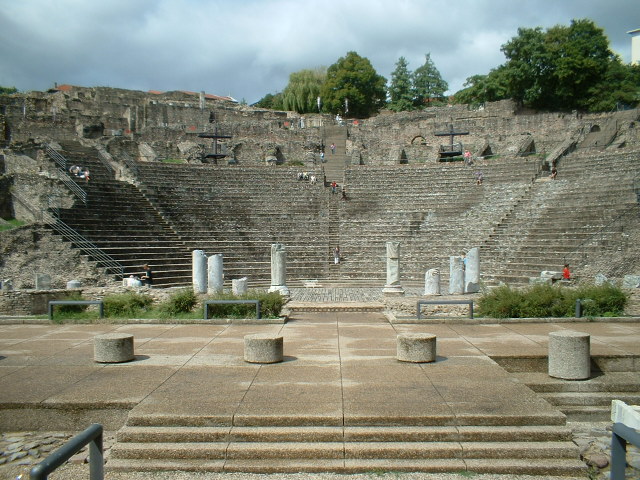 The théâtre gallo-romain.
The théâtre gallo-romain.
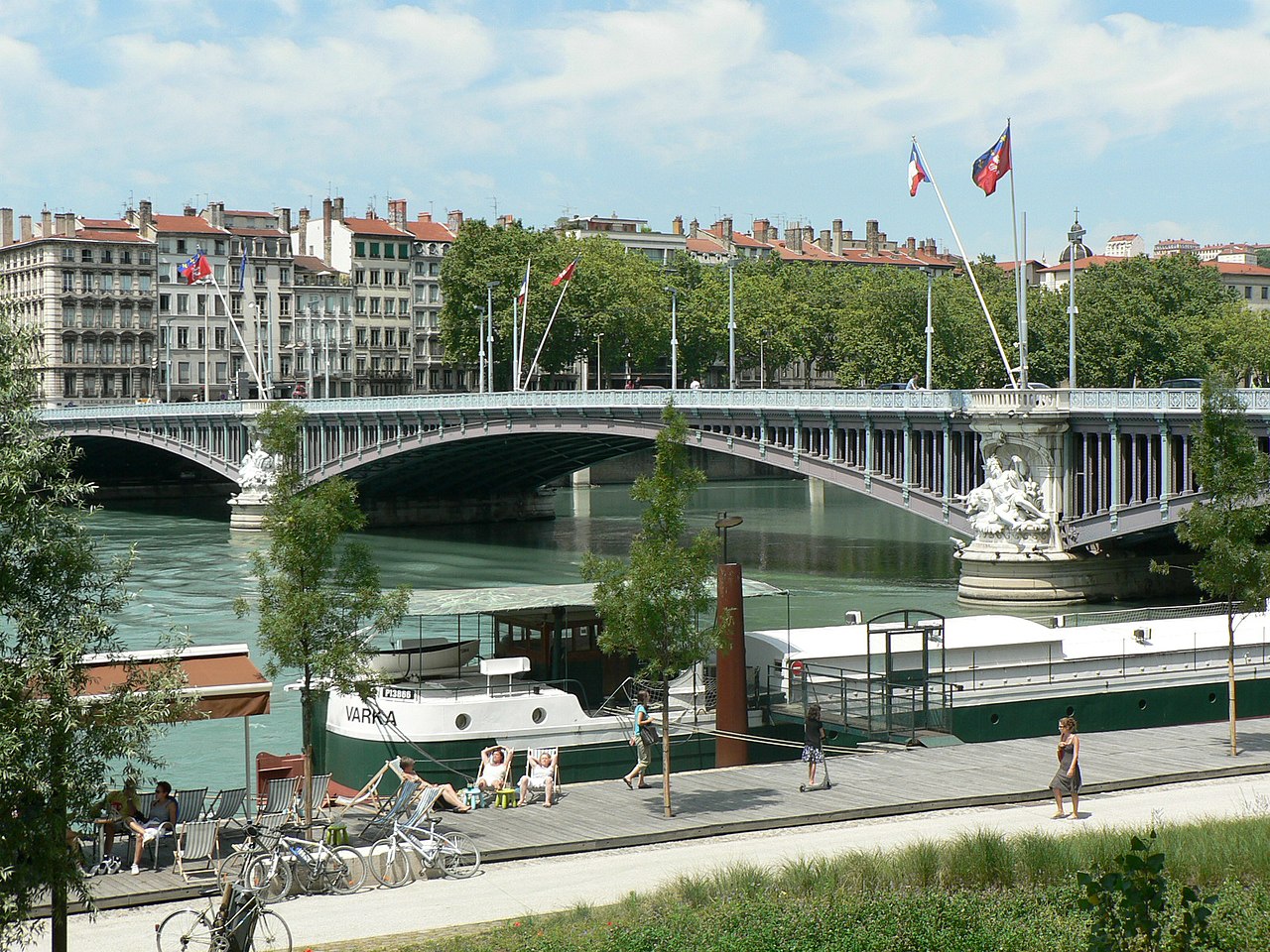 The Rhône, Pont Lafayette
The Rhône, Pont Lafayette
 Fontaine Bartholdi, place des Terreaux.Lyon,France.
Fontaine Bartholdi, place des Terreaux.Lyon,France.




2013_06_14 : From Lyon to Paris on The TGV (French: Train à Grande Vitesse, high-speed train) is France's high-speed railservice.
- My Photo Album :
Visiting Germany (Linderhof Palace_Oberammergau_Church of Wies in Bavaria _Nymphenburg Palace_Munich_Rothenburg-ob-der
Tauberb) Austria (Innsbruck) France(Beaune_Lyon_Nice ) Netherlands (Amsterdam,Volendam)
Monaco .
Visiting Germany (Linderhof Palace_Oberammergau_Church of Wies in Bavaria _Nymphenburg Palace_Munich_Rothenburg-ob-der
Tauberb) Austria (Innsbruck) France(Beaune_Lyon_Nice ) Netherlands (Amsterdam,Volendam)
Monaco .
|
-VIDEO :Popular Videos - Provence & Music_200 videos
-VIDEO : Europe - Travel Video Guides_515 videos_Expoza Travel
-Keep on traveling ... My Europe Trip _Part # 1 :
-VIEW : My Trip To Thailand_Singapore_Malaysia and Vietnam.
-VIEW : My Trip To Thailand_Singapore_Malaysia and Vietnam.




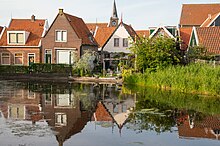




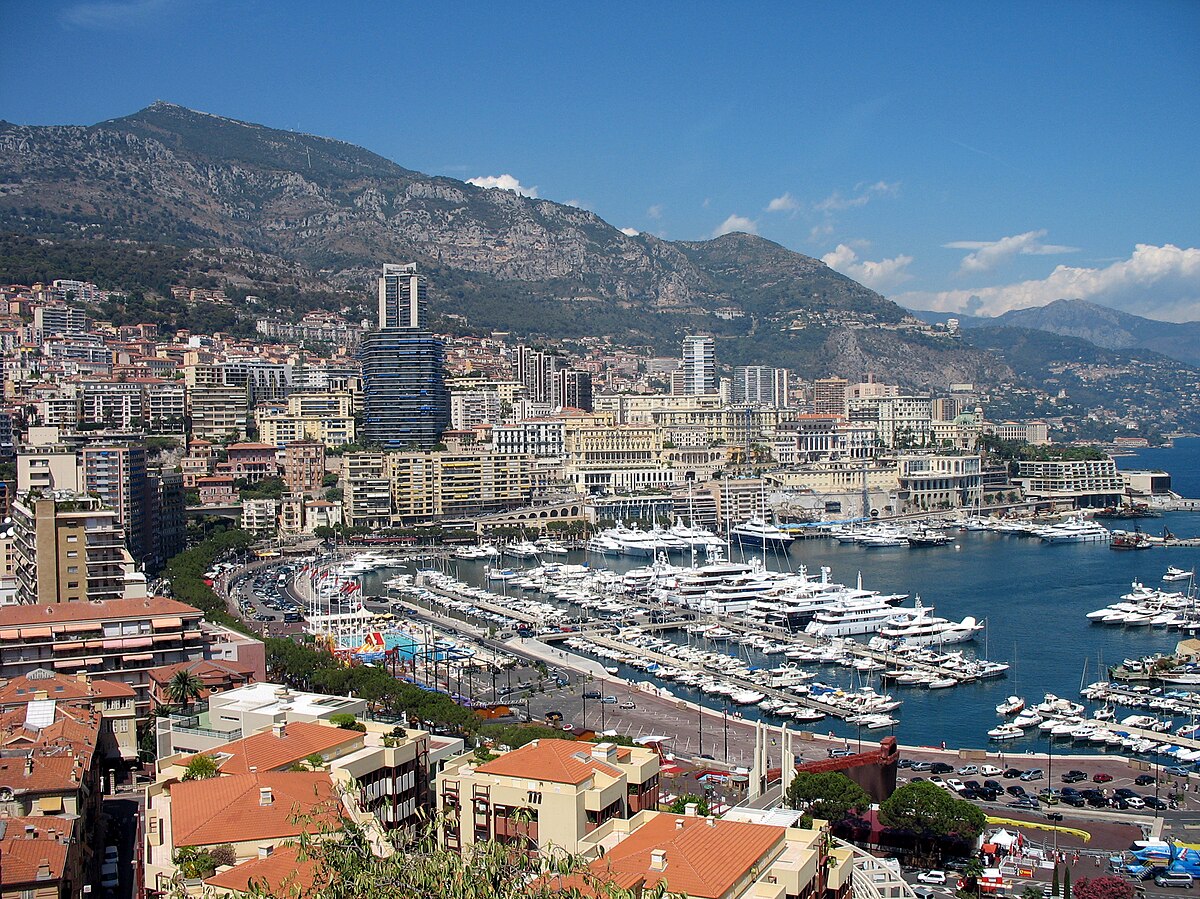
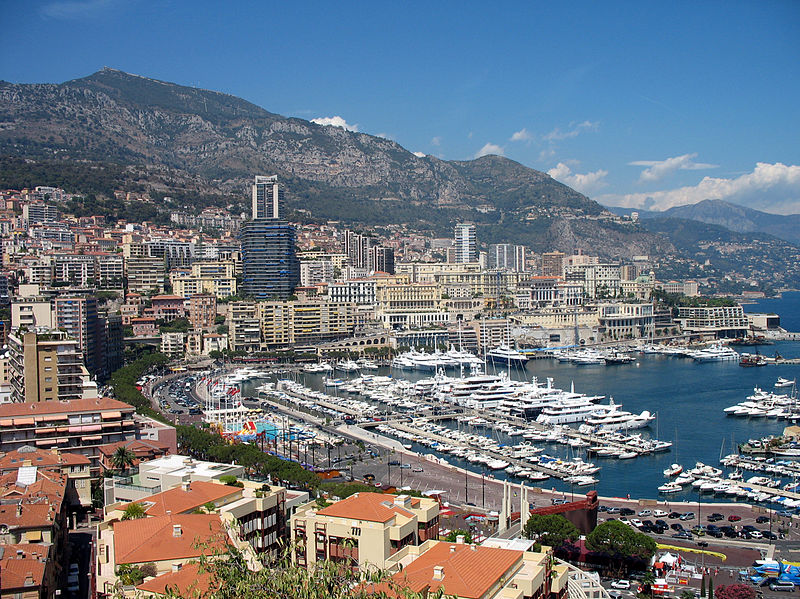

No comments:
Post a Comment